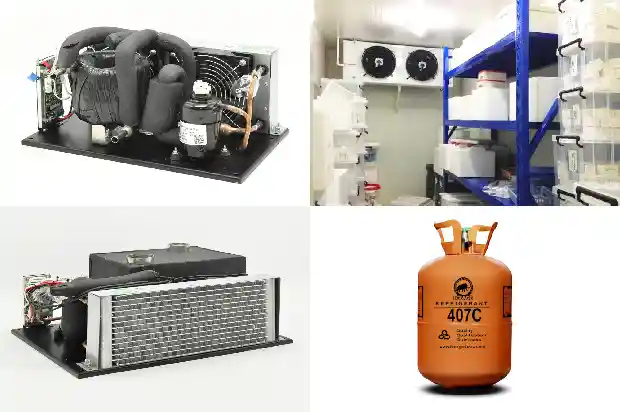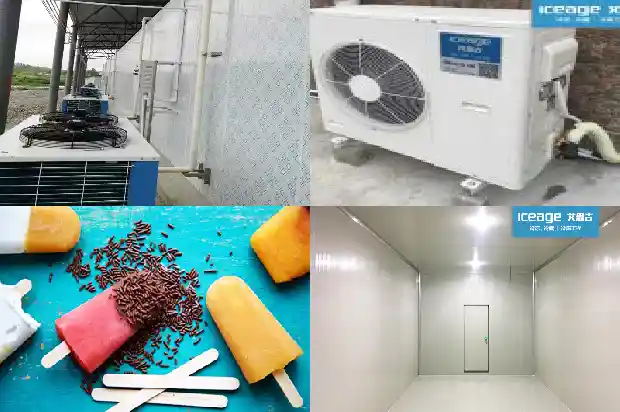Precautions for the Design and Construction of Cleanrooms in Biopharmaceutical Industry
2025-03-14
Clean facilities are the basic conditions for ensuring the product quality of pharmaceutical, medical device, and packaging material production enterprises that have direct contact with drugs, as well as the quality of pharmaceuticals prepared in hospital preparation rooms. They also prevent the contamination of products by the production (preparation) environment. The production (preparation) area must meet the specified environmental parameter standards. In order to ensure that the performance of the cleanrooms (areas) in production enterprises and preparation rooms can continuously meet the relevant requirements of cleanrooms, newly built cleanrooms should undergo project acceptance. The project acceptance should be carried out in two stages: completion acceptance and comprehensive performance evaluation. The inspection and adjustment during completion acceptance should be carried out in an empty state or a static state. The detection state for comprehensive performance evaluation should be determined through negotiation among the construction, design, and construction units, and then detected by a qualified third party. The cleanrooms in use should also regularly carry out performance testing of the cleanrooms (areas). Test some newly built and renovated cleanrooms, and analyze and discuss some problems existing in the operation and system design of the cleanrooms.
- Design and Construction of Cleanrooms Exceeding Standards
(1) For enterprises composed of multiple cleanrooms with requirements ranging from Class 10,000 to Class 300,000, the design and construction parties uniformly design and construct according to the requirements of Class 10,000. This makes the design and construction much easier, and the system debugging also becomes relatively simple.
(2) Raise the cleanliness level of the cleanroom. For example, according to the requirements of the "Good Manufacturing Practice for Pharmaceutical Products" (revised in 1998), the production workshop of oral solid preparations only needs to reach Class 300,000. However, the production enterprise designs, constructs, and accepts the project according to Class 100,000. The area of the cleanroom is too large, and the room height is too high. Enterprises can reserve some rooms for future development, but the air purification system can be turned off during normal times.
(3) Except for cleanrooms with special requirements for the process, such as extraction rooms and drying rooms, the height of cleanrooms is generally between 2.6 meters and 3.0 meters. However, for some unknown reasons, some enterprises build the entire workshop uniformly at a height of 4.0 meters. According to the different requirements of different production processes and different production procedures for the environmental cleanliness, the height should be adjusted accordingly. Try to reduce the area of the part with a high cleanliness level, and replace the cleanroom system with a high - level purification throughout the room with a cleanroom system that combines local high - level purification and lower - level purification throughout the room. This can not only ensure that different production processes meet the requirements of the production environment but also significantly reduce the initial investment and operating costs. - Unreasonable Air Change Rate in Cleanrooms
The air change rate, pressure difference, and the number of suspended particles are the three most basic requirements of cleanrooms. Whether it is the dilution effect in turbulent flow or the replacement effect in unidirectional flow in cleanrooms, it is necessary to control and achieve various parameters of the cleanroom by the amount of clean air. Therefore, the air change rate of cleanrooms should not be too low. - The Upward Supply and Upward Return Mode Should Not Be Adopted
Due to historical reasons, a few cleanrooms still adopt the air supply and return mode of upward supply and upward return. The biggest advantage of the upward supply and upward return mode is its low cost and cost savings. However, it will at least lead to the following situations:
(1) There are more large particles of 5μm at a certain height (such as the breathing zone). Often, it meets the standard when measured by 0.5μm, but fails to meet the standard when measured by 5μm.
(2) In the case of local Class 100, the wind speed in the working area is often very low and it is difficult to meet the standard.
(3) The self - purification time is relatively long. The actual measurement shows that the self - purification time can be twice as long. Although the upward supply and upward return mode may reach the designed cleanliness level in some empty state measurements, it is very unfavorable for removing pollution in the dynamic state and is not a recommended mode. - Problems Existing in Local Class 100
Some enterprises had no major problems in production quality before installing local Class 100. However, after installing local Class 100, some product indicators such as clarity have decreased instead, and the reject rate has increased significantly.
The main reasons for such phenomena are as follows:
(1) The high - efficiency filter is of unqualified quality. It has not been inspected one by one before leaving the factory, and there are loopholes.
(2) The installation quality of the high - efficiency filter is unqualified. That is, the high - efficiency filter is not pressed against the rubber gasket on the frame by screws downward or upward, but is screwed onto the self - tapping screws on the air outlet wall, which will only become looser as it is blown.
(3) The airflow velocity of the unidirectional flow is small, and the pollution cannot be removed immediately after it occurs.
(4) The design of the local unidirectional flow and the background non - unidirectional flow air supply outlets is unreasonable. The non - unidirectional flow air supply outlets are relatively close to the centralized air supply outlet, which will definitely interfere with the unidirectional flow under the centralized air supply outlet. If the non - unidirectional flow air supply outlets are arranged on one side of the centralized air supply outlet, and there is only a single - side air return outlet on the other side, the interference with the local Class 100 will be even greater, especially on the leeward side.
(5) The production personnel have not fully implemented the clean work system, and the pollutants they carry (such as contaminated clean clothes, not wearing a sterile cap, mask, etc.) are blown towards the production line at an accelerated speed. - The Layout and Selection of Various Facilities in the Cleanroom Do Not Fully Consider the Impact on the Airflow Pattern and Air Cleanliness
(1) In a non - unidirectional flow cleanroom, only a single - side air return is set, which increases the eddy current area of the non - unidirectional flow cleanroom and also increases the chance of cross - contamination. If the operator and the working area are between the air supply outlet and the air return outlet, the impact will be even greater.
(2) The air return outlet of the non - unidirectional flow cleanroom is not far enough from the working area.
(3) The process equipment that requires exhaust is not arranged on the leeward side of the cleanroom; the pressure relief valve is not arranged on the leeward side of the clean air flow.
(4) The number of air supply outlets in the cleanroom is too small. Due to the limitations of on - site conditions or excessive reduction of investment in the design of the cleanroom, the number of air supply outlets is often inappropriately reduced. As a result, under the same air change rate, the air outlet speed increases, increasing the unevenness of the velocity field and increasing or expanding the eddy current area.
(5) The selection of the filter is unreasonable. The selection of the filter should follow the following key points: the performance of the final - stage filter should be reliable, the efficiency specification of the pre - filter should be reasonable, and the maintenance of the primary filter and the pre - filter should be convenient. In addition, each high - efficiency filter must be inspected one by one. If possible, try to select a filter with a large filter media area. A large filter area means a large dust - holding capacity and a long service life; a large filter area means a low air flow velocity through the material, a small resistance of the filter, and can also reduce the maintenance cost and the energy consumption cost of the air - conditioning system.
Related Articles
- Installation Precautions for the Source Components of Automatic Instruments in Refrigeration Units
- Precautions for the Installation of Automatic Instruments in Refrigeration Devices (Part One)
- Installation Precautions and Accessory Selection for Cold Storage Unit
- Operation and Precautions of Frozen and Refrigerated Auxiliary Equipment
- Precautions for Using Rotary Refrigeration Compressors
- Precautions for Commissioning of Screw Parallel Units
- Four Combustible and Explosive Refrigerants: Precautions When in Use!
- Accident Handling and Precautions for Circulating Water Pumps
- What Precautions Should Be Taken When Using a Fresh - keeping Cold Storage in Summer?
- Operations and Precautions for Multi - split Air Conditioners: Blowing Debris, Air Tightness, Vacuum Drying, and Refrigerant Charging
- Precautions for the Installation and Use of Water Flow Switches
- Precautions for the Hot Gas Bypass Valve of Refrigeration Units in Cold Storage
- Precautions for Inspecting Valves in Refrigeration Systems
- Parallel Installation and Precautions for Scroll Compressors
- Installation and Oil Return Precautions for Refrigeration Equipment Pipelines
- Precautions for Replacing Refrigeration Compressor Refrigerant Oil
- Precautions for Cold Storage Design
- A Brief Analysis of Quick - Freezing Cold Storage Design
